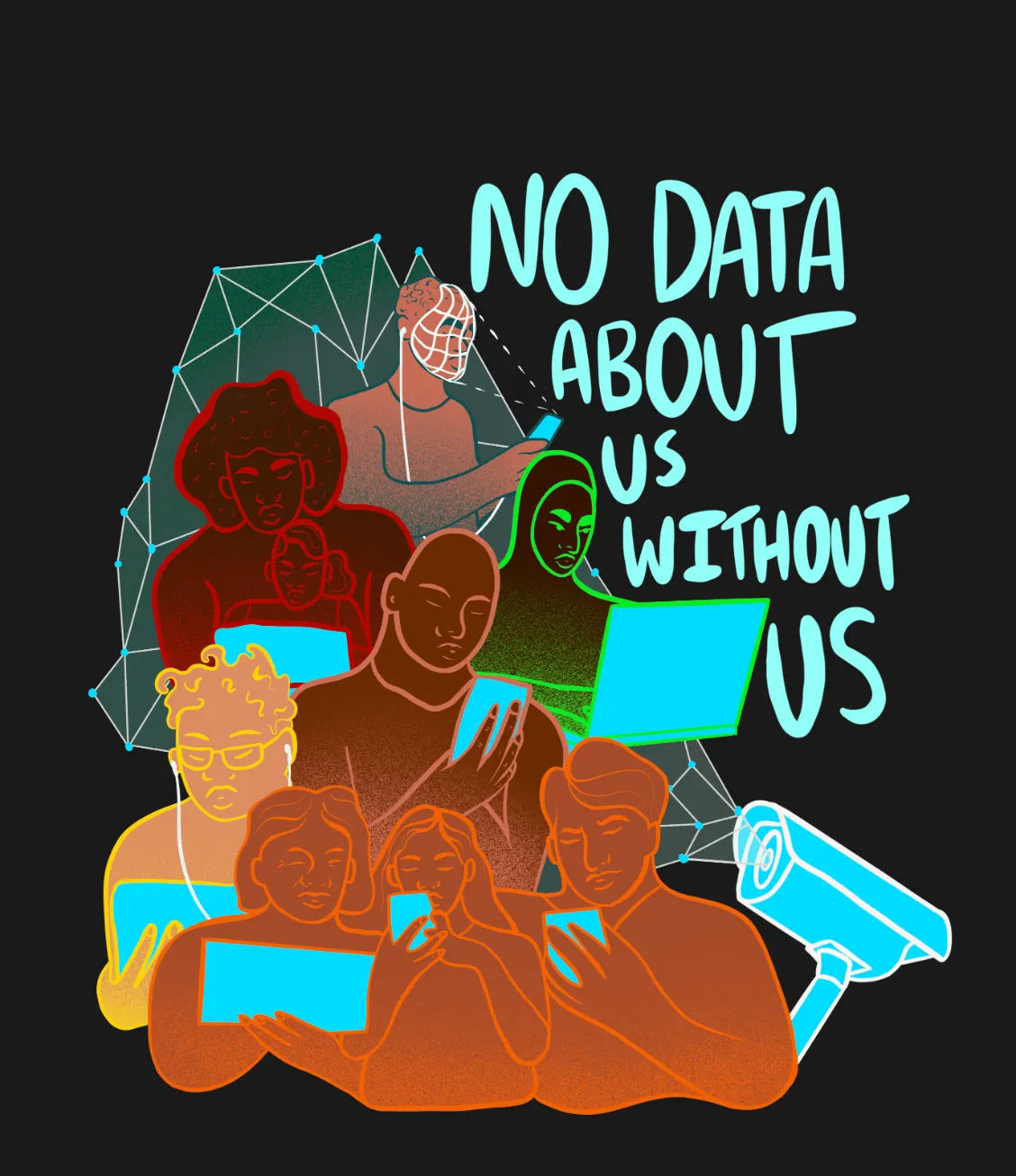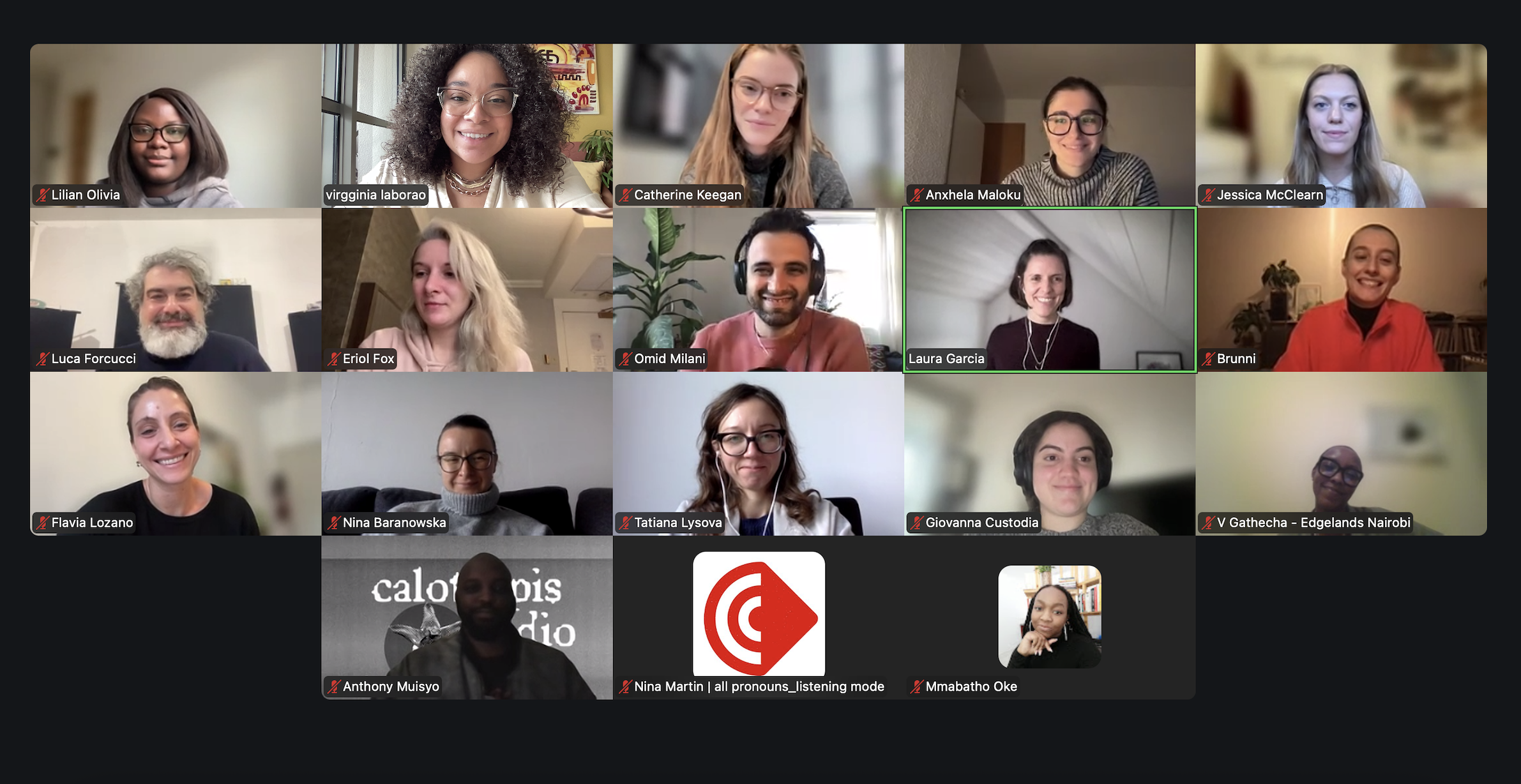The Cost of Being Homeless in the Age of Smart Cities
Emre AltındağIn his work-in-process art book, Emre Altindag explores the anxiety of being constantly watched as a consequence of digitalisation of security in contemporary society.

Illustration by Emre Altindag. "Cameras all around... Surveillance everywhere. A woman is trying to survive with her mat, bag and a few items in front of the window of a luxury store; the exposure of a woman who does not have a 'safe' four-walled place to hide, take shelter, protect her privacy…"
As part of the Edgelands Fellowship programme, I am creating a 50 page art book to attempt to mimic and replicate the feeling of the “unknown” watching over us. Why this topic? I, like many others, have been anxious about being “watched”. With the increase of new smart technologies, it has only increased this feeling of discomfort. These experiences provided the inspiration to create an art book that communicates these concerns to the audience visually. You might notice for each image, I tend to use as little text as possible to make the visuals more effective! About my medium and technique, I use mostly pen and ink on paper. I enjoy the feeling of using simple and traditional methods while creating art. Throughout this Fellowship and the making of my project, I hope to learn more about smart cities, and to display that information through a female protagonist. Because the issue of homelessness is mostly told through male characters in the media, I wanted to focus on the experiences of a woman at this point.
Through the story of one homeless person, I will consider this question of how digital applications used in smart city designs affect a person’s private life. In taking the concept of surveillance and privacy to the extreme, I will illuminate how these concepts uniquely reach different dimensions for homeless people who have to live outside and be exposed to more data surveillance mechanisms rather than a non-homeless person.. How does living in the center of mega surveillance and Big Data affect a person's life? These are the kind of questions that really inspire me to think about a story which focuses on a day of a homeless person in one of the smart cities.
Smart cities, for all their advantageous security policies, remain a dystopian metaphor. They can be considered as an urban area with various digital technologies to collect data and use them to create resources and services. Perhaps the most primary reason for this is the fear of privacy that surveillance awakens in us. The advent of new technologies such as smartwatches, airtags, smart traffic control systems has enormously impacted the ‘traditional’ definitions of concepts such as public and private space, visibility, accessibility, exposure, consent and freedom. The definitions were previously understood as a person’s own controllable mechanism and many see that all personal information cannot be easily accessible to the public. So, most of the people don’t feel that their life is exposed too much to the outside. But now, this situation is rapidly changing and these concepts can reach very different dimensions. At that point, even though these all effect differentially from person to person, I wonder what dimensions these concepts reach in the case of a person being homeless who could be in the most fragile position in this situation?





